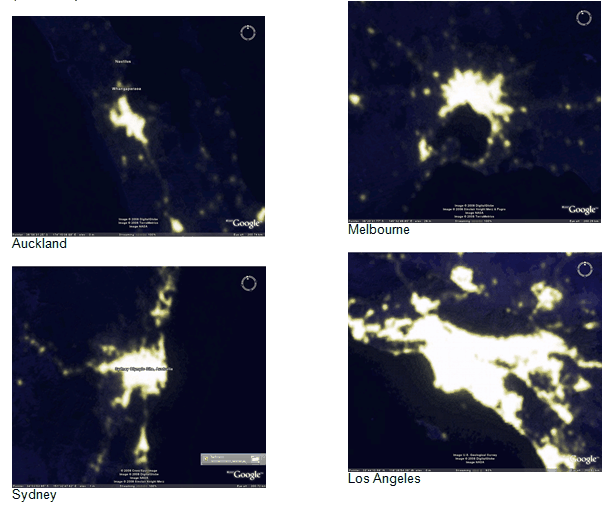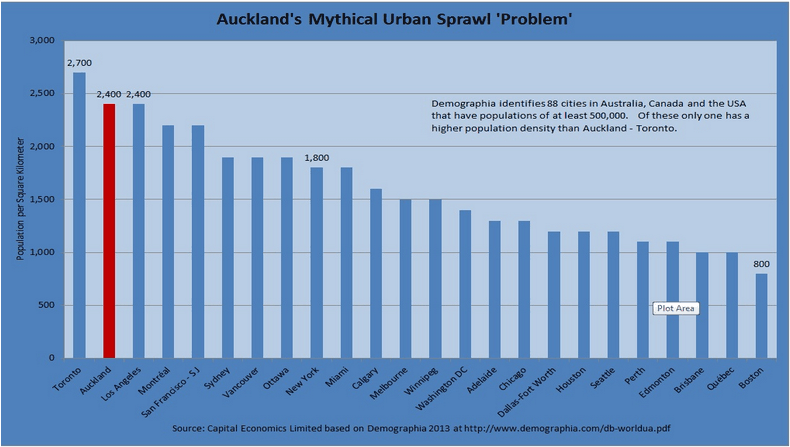
After last month taking the fight to Auckland’s entrenched anti-sprawl “NIMBYs” (Not In My Backyard) and “BANANAs” (Build Absolutely Nothing Anywhere Near Anyone) groups in a speech at an Auckland Chamber of Commerce and Massey University luncheon, and earlier this month attacking town planners for restricting the growth of housing supply, New Zealand’s Deputy Prime Minister and Finance Minister, Bill English, yesterday unloaded a stinging attack on urban consolidation policies that force-up the cost of housing in New Zealand.
Answering questions from Green Party co-leader, Russel Norman, about a possible spike in overseas investment, English unloaded with the following via Interest.co.nz:
…all the analysis shows that the fundamental driver of the high cost of housing is not the Greens’ friends from China, it is the Greens’ friends in the planning departments of our City Councils who insist on blocking new development of new housing”…
“So the Greens are a much bigger enemy of affordability of housing in New Zealand than the Chinese have ever been”…
“The fundamental driver of the increase in housing is the restrictive planning policy, which means that when there’s more demand, whether it’s foreign, or in this case New Zealanders who have stopped migrating and are staying home, and more people who are arriving in New Zealand as migrants, when those factors of demand are rising, the supply cannot react to it”…
“All around the world more restrictive planning mean higher prices and more volatile prices and the Greens back that kind of policy. They should be backing the Government on getting rid of that kind of policy if they’re really concerned about locking low and middle income New Zealanders out of the housing market.”
While I don’t agree with English that the Government should ignore foreign purchases altogether, his comments on the bigger issues around supply are spot on.
New Zealand’s constraints on land supply have been slammed by the New Zealand Productivity Commission, whose 2012 report into housing affordability cited a body of evidence showing that strict policies of urban containment and slow development approval times had adversely affected the rate of new home construction, as well as significantly inflated land and housing costs. The Commission later followed-up with further research showing that Auckland’s urban growth boundary (called the “Metropolitan Urban Limit” or MUL) has significantly increased urban land prices in general, with land prices in the lower part of the distribution worst affected.
In the case of Auckland, there should be no urgency to restrict the urban footprint given that it is such a small city by global standards. Sydney, for instance, is nearly 1,700 square kilometres in size – three times larger than Auckland, which is only 530 square kilometres. Melbourne, which is nearly 2,100 square kilometres in size is nearly four times as large as Auckland, whereas Los Angeles at 4,300 square kilometres is nearly eight times the size of Auckland (see below google maps images).

Further, nearly all of all Auckland’s regional rural land is used unproductively as it is held as lifestyle blocks which are in effect super low density urban residential lots appropriate for subdivision. In fact, the number of lifestyle blocks has exploded across New Zealand, increasing by around 75,000 to 175,000 over the past 13 years, and now consume roughly 873,000 hectares (8,730 sq km) of land, compared with only around 180,000 hectares (1,800 sq km) of land used for urban uses.
The end result is that Auckland has one of the densest populations in the Anglosphere (see next chart), overly expensive housing (median house price of around $NZ650,000) and severe congestion problems, in part caused by cramming its 1.5 million population into such a small area.

Ultimately, Auckland’s intensification efforts, whereby 60% of homes are to be built on brownfield (pre-existing) sites is bound to fail. Not only does such development tend to face stiff NIMBY opposition, but the sheer high cost of existing housing means that buying it, demolishing the buildings already on it, and buildings new ones, cannot be done at a price that buyers can afford.
Overall, English is correct to focus on New Zealand’s constipated planning system, which is a stranglehold that must be broken if housing in New Zealand is to be made affordable for families.
That said, the National Government would also be wise to crack-down on artificial sources of demand – including negative gearing, capital gains tax exemptions on investment properties, and foreign purchases – which are brushing-up against the supply constraints and making the affordability situation in New Zealand even worse.

